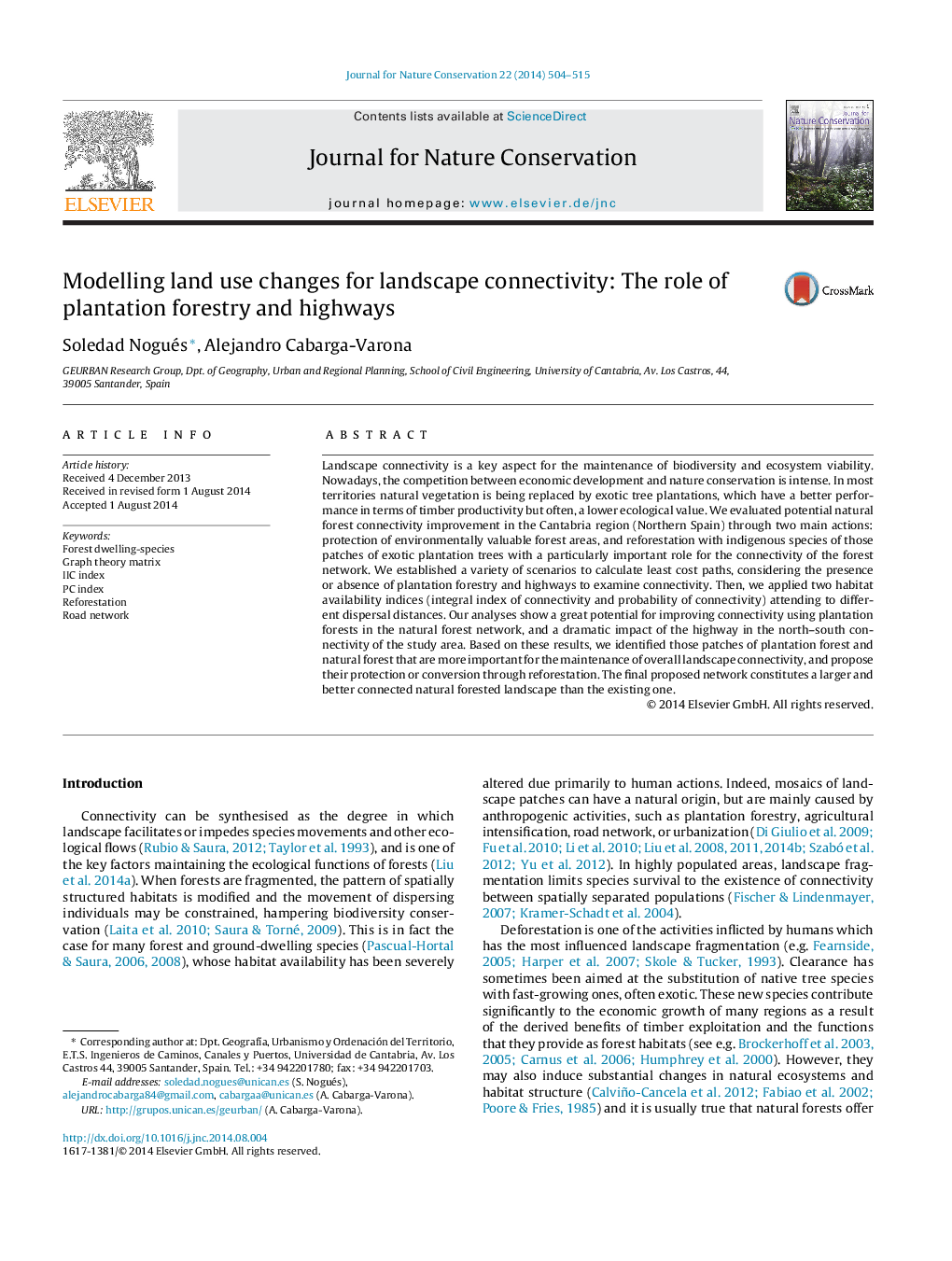| Article ID | Journal | Published Year | Pages | File Type |
|---|---|---|---|---|
| 4399750 | Journal for Nature Conservation | 2014 | 12 Pages |
Landscape connectivity is a key aspect for the maintenance of biodiversity and ecosystem viability. Nowadays, the competition between economic development and nature conservation is intense. In most territories natural vegetation is being replaced by exotic tree plantations, which have a better performance in terms of timber productivity but often, a lower ecological value. We evaluated potential natural forest connectivity improvement in the Cantabria region (Northern Spain) through two main actions: protection of environmentally valuable forest areas, and reforestation with indigenous species of those patches of exotic plantation trees with a particularly important role for the connectivity of the forest network. We established a variety of scenarios to calculate least cost paths, considering the presence or absence of plantation forestry and highways to examine connectivity. Then, we applied two habitat availability indices (integral index of connectivity and probability of connectivity) attending to different dispersal distances. Our analyses show a great potential for improving connectivity using plantation forests in the natural forest network, and a dramatic impact of the highway in the north–south connectivity of the study area. Based on these results, we identified those patches of plantation forest and natural forest that are more important for the maintenance of overall landscape connectivity, and propose their protection or conversion through reforestation. The final proposed network constitutes a larger and better connected natural forested landscape than the existing one.
